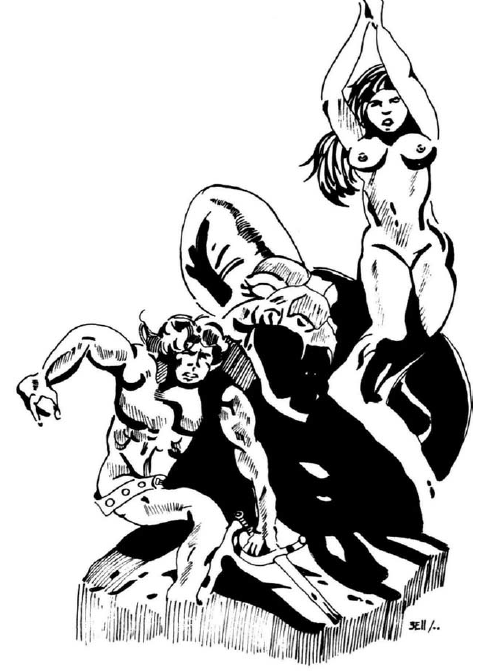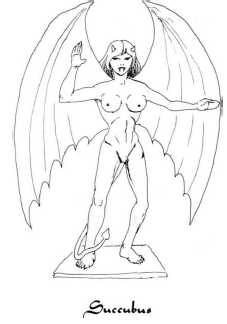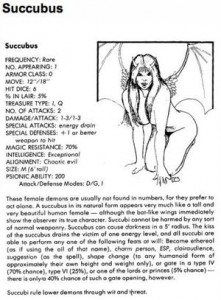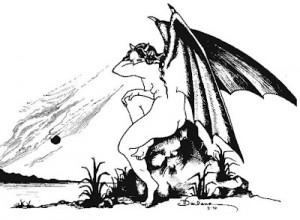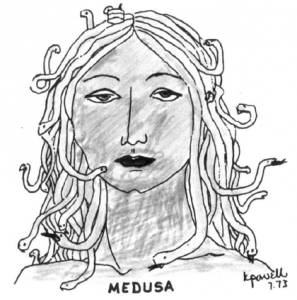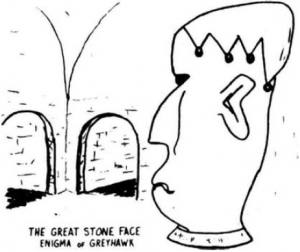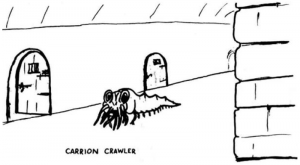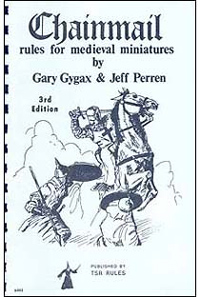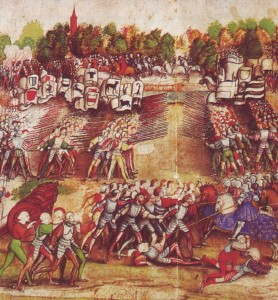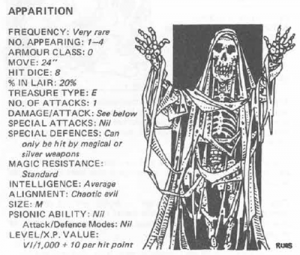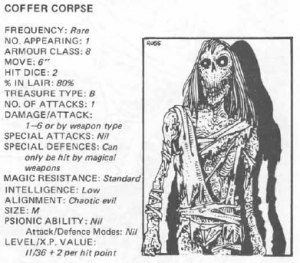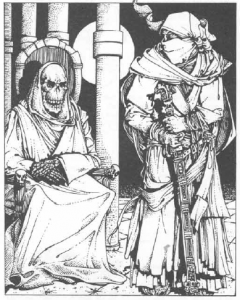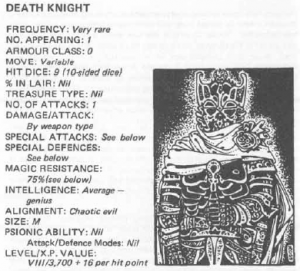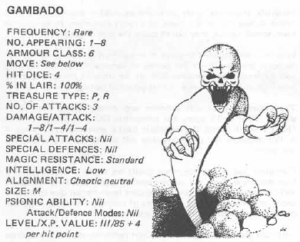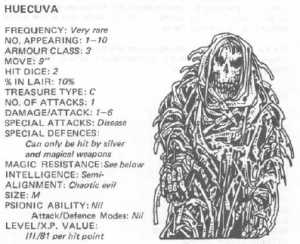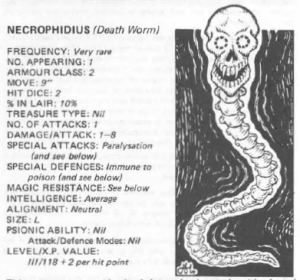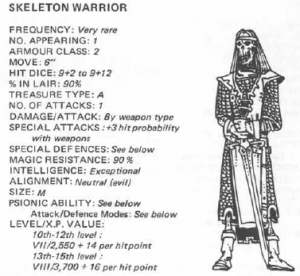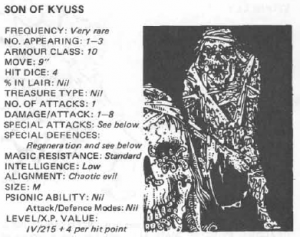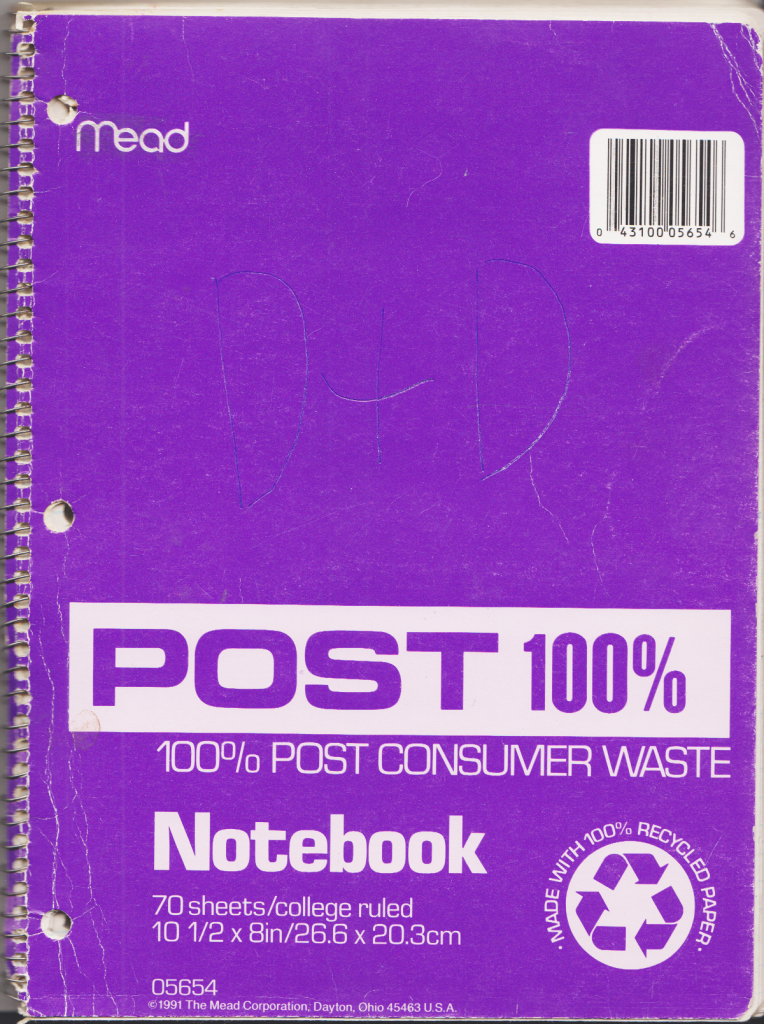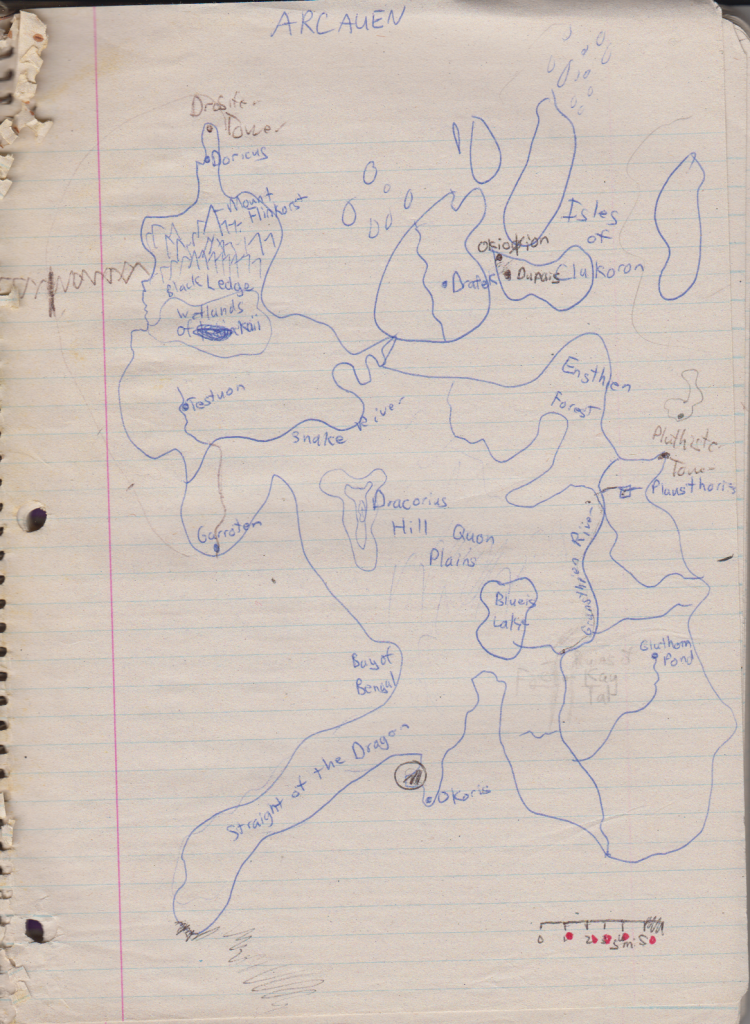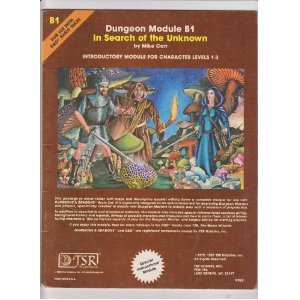 I’ve heard a lot of references to the 1981 module “In Search of the Unknown:” it came with the first edition of Basic D&D, and a lot of people have fond memories of it. I’ve never read it. When I got a heavy box of D&D books in the mail, it was the first module I grabbed.
I’ve heard a lot of references to the 1981 module “In Search of the Unknown:” it came with the first edition of Basic D&D, and a lot of people have fond memories of it. I’ve never read it. When I got a heavy box of D&D books in the mail, it was the first module I grabbed.
I’ve been on a search of my own lately, exploring the D&D I missed before I entered the hobby. As a kid, I played in bizarre junior high versions of Red Box Basic and AD&D, and as an adult I’ve mostly played third and fourth edition. It’s been fun playing OD&D: I’m slowly getting a handle on a different style of D&D than one I’ve ever played.
I was delighted to find Mike Carr’s lengthy “how to play D&D” essay at the beginning of the module. It’s pretty similar to advice in the OD&D and Dungeon Master’s Guide books, but since I’ve never read it before, it’s fresh. I have two other fresh experiences with which to compare the advice: my OD&D games with Mike Mornard and my extremely close study of Gary Gygax’s Random Dungeon Generation tables from the Dungeon Master’s Guide. There are a lot of parallels to draw here.
mapping
Here’s what Mike Carr says about the dungeon in In Search of the Unknown:
The dungeon is designed to be instructive for new players. Most of it should be relatively easy to map, although there are difficult sections – especially on the lower level where irregular rock caverns and passageways will provide a real challenge.
I didn’t realize until Mike Mornard spelled it out for us that mapping was intended to be one of the big challenges of D&D. The labyrinth is as dangerous as the minotaur. In Search of the Unknown is explicitly teaching mapping skills. The assumption is that more advanced modules will be bigger mapping challenges.
It is quite possible that adventurers (especially if wounded or reduced in number) may want to pull out of the stronghold and prepare for a return visit when refreshed or reinforced. If this is done, they must work their way to an exit.
When we play in Mike Mornard’s D&D game, he makes us use our maps. We can’t say “We leave the dungeon.” Every time, we have to specify our twists and turns back to the entrance. This still feels foreign to me. I think I’ve quoted Baf of The Stack before: a game is about what you spend your time doing. OD&D is a game about mapping. Exploration takes more game time than combat. Coming from 3e and 4e, I feel like I’ve been playing a different game.
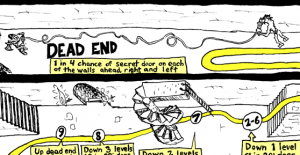 I love the 1e Player’s Handbook illustration of the troll re-winding the twine trailed by the fighter. (I referenced it in my poster.) Mornard related this story: Once in Dave Arneson’s Blackmoor game, some guys decided to leave string behind them instead of mapping. Eventually, the rope jerked out of their hands and started unrolling, and then they heard a slurping, like someone eating spaghetti. Mapping is a necessary skill: don’t try cheat your way out of it.
I love the 1e Player’s Handbook illustration of the troll re-winding the twine trailed by the fighter. (I referenced it in my poster.) Mornard related this story: Once in Dave Arneson’s Blackmoor game, some guys decided to leave string behind them instead of mapping. Eventually, the rope jerked out of their hands and started unrolling, and then they heard a slurping, like someone eating spaghetti. Mapping is a necessary skill: don’t try cheat your way out of it.
caution
One player in the group should be designated as the leader, or “caller” for the party… once the caller (or any player) speaks and indicates an action is being taken, it is begun – even if the player quickly changes his or her mind (especially if the player realizes he or she has made a mistake or error in judgment).
Before playing in Mike Mornard’s game, my eye would have skipped over this classic bit of old-school advice as irrelevant to me. Now I’ve seen it in action:
DM: There are passages north and west.
US: We go south.
DM: Bump… bump… you bump into the wall.
More ridiculously, I recently had my thief start down the magic staircase into the chamber of Necross the Mad, even though I knew that the stairway hadn’t been summoned yet. A merciful DM would have reminded me of that fact – what adventurer would step off a ledge? – but Mike Mornard took me at my word, and I fell. Mike only gave me one point of damage, where perhaps Gary Gygax or Dave Arneson would have assigned more.
Mike says that his game is pretty close to the Gary and Dave game in rules and in content, but where their influences ran more to swords and sorcery, Mike brings more Warner Brothers to the table. There is a lot of laughing in Mike’s game, where Gary and Dave’s were grimmer. But in all three games – and in Mike Carr’s game as well – you need to listen to the DM, and visualize what you hear – and think. As Mike Carr’s introduction says elsewhere, “Careless adventurers will pay the penalty for a lack of caution – only one of the many lessons to be learned within the dungeon!”
time
Every third turn of adventuring, the DM should take a die roll for the possible appearance of wandering monsters at the indicated chances (which are normally 1 in 6)… Some occurrences (such as noise and commotion caused by adventurers) may necessitate additional checks… Wasted time is also a factor which should be noted, as players may waste time arguing or needlessly discussing unimportant matters or by simply blundering around aimlessly. … You set the tempo of the game and are responsible for keeping it moving. If players are unusually slow… allow additional chances for wandering monsters to appear.
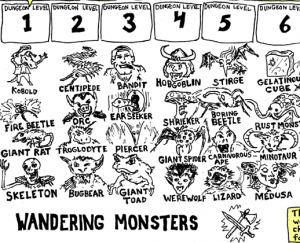 This passage will feel very familiar to the players in Mike Mornard’s game. We’ve all grown to fear the d6, which comes rolling out at us whenever we’re “needlessly discussing unimportant matters or simply blundering around aimlessly” – which is often. Wandering monsters disappeared from 4e (and from many 3e games) because they slowed down the game pointlessly. What Mike Carr is suggesting here, and what we’ve learned from Mike Mornard, is that wandering monster checks are actually a way to preserve pacing. Once you’re in the dungeon, you can’t afford to get bogged down in bickering over minutiae. How I wish that work meetings came with wandering monster checks.
This passage will feel very familiar to the players in Mike Mornard’s game. We’ve all grown to fear the d6, which comes rolling out at us whenever we’re “needlessly discussing unimportant matters or simply blundering around aimlessly” – which is often. Wandering monsters disappeared from 4e (and from many 3e games) because they slowed down the game pointlessly. What Mike Carr is suggesting here, and what we’ve learned from Mike Mornard, is that wandering monster checks are actually a way to preserve pacing. Once you’re in the dungeon, you can’t afford to get bogged down in bickering over minutiae. How I wish that work meetings came with wandering monster checks.
mysterious containers
The dungeon includes a good assortment of typical features which players can learn to expect, including… mysterious containers with a variety of contents for examination.
The typical D&D treasure announcement isn’t “You find 1000 GP in a chest:” it’s “You find an old wooden chest. What do you do?” Containers are important. The Appendix A random generator has three separate tables for rolling up characteristics of treasure containers. Here are a couple of the ones I’ve encountered in OD&D:
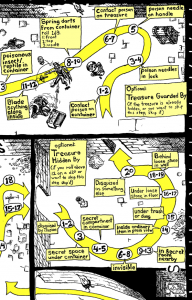 Contact poison on trap: One of the cardinal OD&D rules is “check the chest for traps.” As the party thief, I make sure to incant this formula. I think that the Greyhawk supplement has rules for finding traps, and I imagine that my odds of success are quite low, but in the last game, Mike told me, without requiring a roll, that the lock was covered with a brownish paste. Good enough warning for me to wear gloves. This transforms a 50/50 chance at arbitrary death into a game element that rewards a methodical, cautious play-style: quite in keeping with the mysterious OD&D “player skill.”
Contact poison on trap: One of the cardinal OD&D rules is “check the chest for traps.” As the party thief, I make sure to incant this formula. I think that the Greyhawk supplement has rules for finding traps, and I imagine that my odds of success are quite low, but in the last game, Mike told me, without requiring a roll, that the lock was covered with a brownish paste. Good enough warning for me to wear gloves. This transforms a 50/50 chance at arbitrary death into a game element that rewards a methodical, cautious play-style: quite in keeping with the mysterious OD&D “player skill.”
We considered taking the chest with us so we could brush it against opponents, but Mike’s beatific expression – that of a DM who’s thought of flaws in PCs’ plans – warned us to leave it where it was.
Invisible chests: Invisible chests are are oddly common in dungeons made with the Appendix A random generator – and hard to illustrate. They always seemed to me oddly pointless. Why include a treasure you can’t possibly find?
In our case, we passed the invisible chest on the way into a room, but tripped over it on the way out. I can imagine it working like OD&D’s 3 in 6 chance to fall in a pit: there are rewards, as well as dangers, you might never know you passed.
Our invisible chest contained 1000 or so gold, but we were all struck by the advantages of owning our own invisible chest. My character in particular, who frequently leaves his bandit hirelings unsupervised at home, has every need of a way to hide his treasure.
There’s probably a lot more of interest in In Search of the Unknown, but I’ll leave the rest unread – just in case I can get someone to run it for me. After all (says Mike Carr,) “this element of the unknown and the resultant exploration in search of the unknown treasures (with hostile monsters and unexpected dangers to outwit and overcome) is precisely what a DUNGEONS & DRAGONS adventure is all about.”


